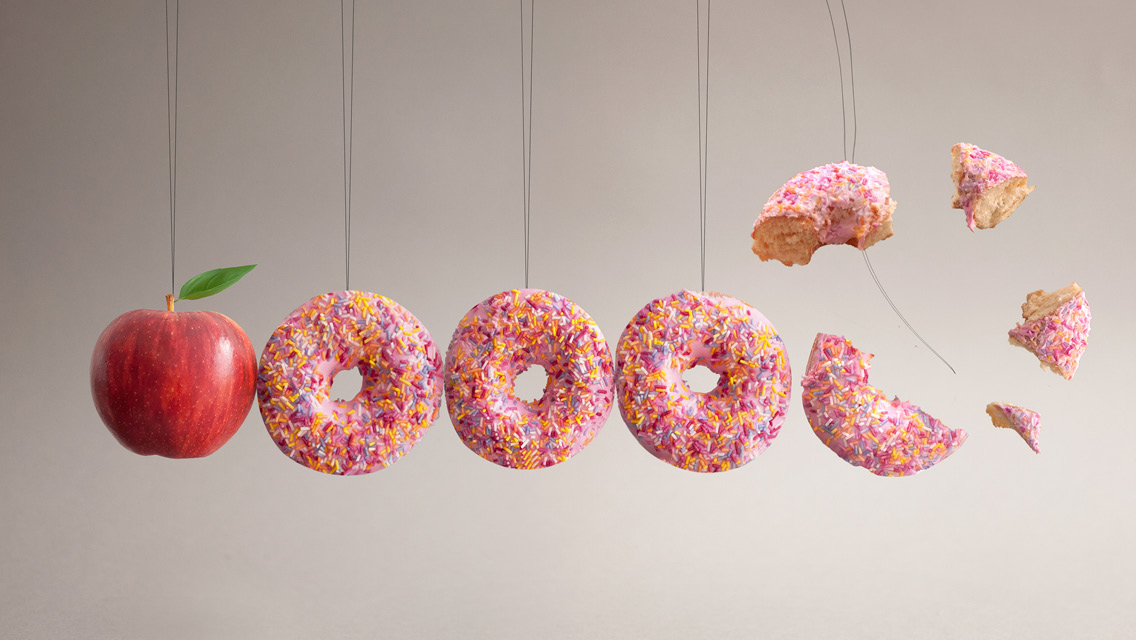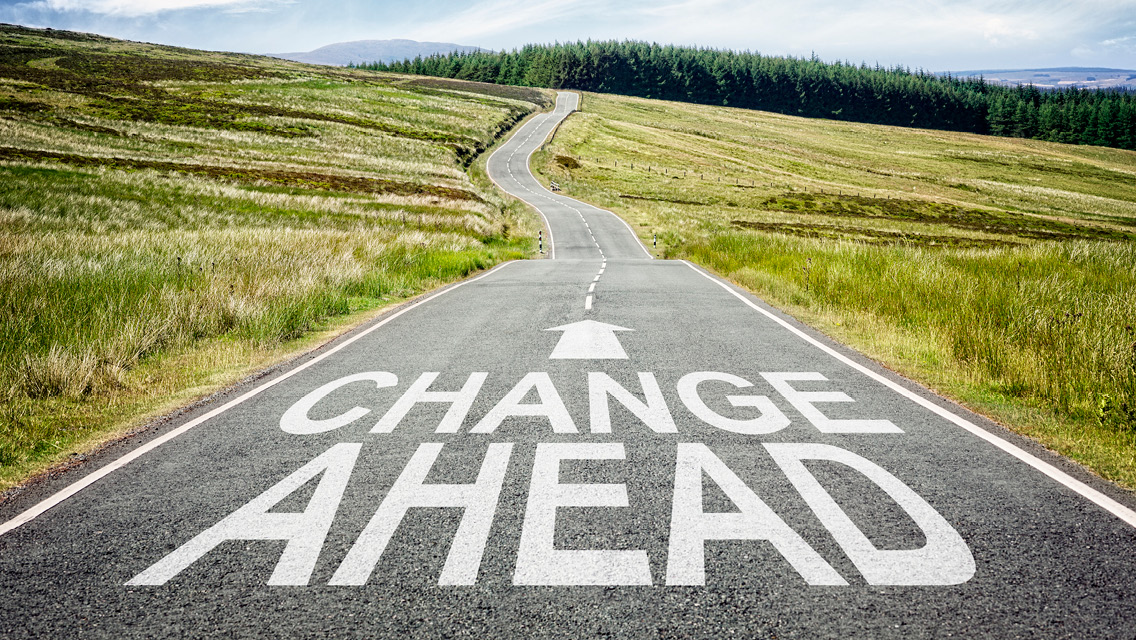Guilt. Shame. Failure. How can one doughnut, a single puff of a cigarette or a measly missed workout have the power to stir up such strong emotions? If you’ve made a sincere pledge to stop eating junk food, to quit smoking or commit to a regular exercise program, these small events can feel like giant setbacks. You may take them as evidence of personal weakness, lack of will, a doomed effort or even a signal that you just aren’t cut out for self-improvement.
View Relapses as an Opportunity ⋅ Natural Rhythms of Personal Evolution ⋅ Understanding Why Your Fall Back Into Old Habits ⋅ Old Habits Die Hard — But Don’t Panic ⋅ Coping With Setbacks
Technically, these little hiccups are known as relapses. The dictionary defines relapse this way: “To fall back into a former mood, state, or way of life, especially a bad or undesirable one, after a period of improvement.”
On one hand, the word “relapse” carries a deep, negative association with falling off the wagon, being weak-willed, moving backward. On the other, it also implies an important truth: that most of our experiences – successes and failures alike – are not permanent states; rather, their very nature is to exist in a particular state only for a while. The most misunderstood aspect of relapse is that it is a natural part of the grand cycle of change.
Given this, rather than letting ourselves be ashamed and discouraged whenever relapses strike, we would do better to expect them and take them in stride. We must also realize that, as with any consistent pattern, the cycle of relapsing can even be employed to our advantage.
View Relapses as an Opportunity
Just how can relapsing be seen as a good thing? Well, for one, relapses allow us opportunities for review, reflection and deep learning. They see to it that we have access to every last scrap of insight available in our own evolutionary process.
By watching ourselves cycle through periods of commitment, effort, success, faltering and discouragement, and then back into recommitment, we learn what our emotional tendencies and thought processes are in each of those phases of experience. Each time we go through that cycle, we have the opportunity to get smarter, deeper, stronger. We accumulate wisdom and a better sense of what makes us tick. (See “Stages of Change” to gain a better understanding of the six steps we go through when tackling change.)
Relapses also teach us compassion – for ourselves and for others. They teach us that it is possible for each of us to be all things: successful and insufficient, powerful and helpless, conscious and unconscious, clear and confused. They also teach us humility and save us from becoming self-righteous about our own successes. Finally, as I address in more detail below, relapses can actually help inoculate us against frustration, dissatisfaction and inertia – if we know how to handle them.
Natural Rhythms of Personal Evolution
Perhaps the most important aspect of relapses is that they demonstrate for us what cycles are all about. Granted, that sinking “here we go again” feeling isn’t always pleasant. Particularly when we’ve been feeling really good about a particular phase or moment of our own accomplishment, we may just want to camp out there and pretend it’s where we’ve always been and always will be. But like all life on this planet, human beings follow cycles – periods of high and low energy, focus and distraction, enthusiasm and apathy. We’d be bored to death – and permanently stunted – if it were otherwise.
Consider the way the seasons progress:
Spring leads to summer leads to winter and back to spring. But no two successive springs are entirely alike. Yes, those same trees in your backyard are growing leaves again, but (assuming they are healthy) each one of those trees is also a little bit bigger, with more branches and more leaves busting out. They may also have dropped some nuts or seeds last fall that are just now taking root in the ground. Now, you could say the trees “relapsed,” in losing all their leaves, getting brittle and dropping all their stuff to the ground. But would you have it any other way?
Like trees, we don’t just shoot consistently up and out, and we aren’t always in our full splendor. Even at our best, we don’t move ahead in straight lines; we move ahead in forward-trending spirals. (At certain points, it may feel like we are moving backward, but as long as we stay conscious and observant, we can see how those steps back prepare us for leaps forward.)
Understanding Why You Fall Back Into Old Habits
What happens in nature happens in our own lives, too. As new patterns come into play, old patterns crumble and dissolve. If we learn to recognize where we are in this cycle, we can begin to predict how and when we will behave in certain ways. And predictable patterns can be used to our advantage.
Let’s take the example of weight loss. Suppose you decide you want to lose 20 pounds and improve your fitness. You’ve long been in a pattern of rushing to work without breakfast, making no plans for a satisfying lunch, then collapsing after dinner to snack in front of the TV until bedtime. This is an established structure, one that has been sustaining your life (such as it is) for some time.
To successfully change your weight, you will need to alter this pattern of habits (and, likely, many other, interlocking ones) that your life is built around (see “How to Build Better Habits” for strategies to help you build sustainable habits). You’ll also need to integrate a whole host of new habits around eating better and exercising more regularly. To this end, you know you’ll need to shift some of your energy out of the old habit structure and invest it into the new one. So you start making protein shakes in the morning to help you resist the sweet snacks that often appear around the coffee pot at work. To reach your goal of consistent exercise, you decide to substitute a workout for two hours of television three times a week.
So far so good: If you give something up, it’s wise to consciously replace it with something else. Otherwise, you’ll create a vacuum in your structure and be prone to relapsing as a means of filling up that uneasy empty space. The only problem is, we don’t always know just what holes we are creating when we make changes. Some of our habits serve more than one purpose: For example, a cookie-snacking habit may be as much about emotional comfort as it is about food or hunger. So if we attempt to change the snack habit simply by replacing the problem food with something healthier (say, carrot sticks), but we ignore the comfort factor, we are only halfway there. We still have an emotional vacuum on our hands, and that may be the very thing that pulls us into a relapse.
But the relapse, when it happens, gives us the opportunity to ask, “What was I missing there? What’s behind this? What am I still needing to move forward?”
But the relapse, when it happens, gives us the opportunity to ask, “What was I missing there? What’s behind this? What am I still needing to move forward?” The insights we gain from asking those questions can propel us into a much stronger growth/success cycle than simply giving up the cookies on the first try.
We may discover that emotional comfort is really an important piece of the puzzle that’s lacking from our life’s bigger picture. The relapse is, in effect, taking our hand and leading us back to something that needs our attention, not just to improve our diet, but to improve our life on the whole.
Our relapse may be pointing out our system’s dissatisfaction with our partial solution and saying, “Excuse me, but I believe you may have overlooked something.”
Old Habits Die Hard — But Don’t Panic
It’s important to remember that once the new habits are in place, the old ones are not necessarily gone. Initially, in fact, it’s quite likely that the old habits will periodically exert a stronger pull than the new ones. Recognize that in some cases these “relapses” are really opportunities for review. It’s as if, after a certain amount of forward progress, your body takes you back to where you were before and says, “Hey, remember when you were way back here? When this was all you knew?”
It’s important to remember that once the new habits are in place, the old ones are not necessarily gone.
Of course, there is a part of you that is thinking, “Wow, yeah, this was so easy.” But there is likely another part of you saying, “Huh, you know, this pattern really isn’t that appealing any more. I think I like what I’ve been doing better than this, even if it demands a bit more effort and focus.” Then you have the opportunity to return to your healthy pattern with more confidence and pride. Without that review, you probably wouldn’t have realized how far you’ve come, or taken away the important lesson that it is possible for you to make dramatic changes in your life by conscious choice.
So next time a setback takes you by surprise, don’t berate yourself. Instead, use the evaluation stage of the process to make your new habit structure stronger. Then get out there and face your next relapse – not as an enemy, but as an agent for change.
Coping With Setbacks
If you’re changing habits in your life, at some point you will probably find yourself slipping back into your old ways. Instead of fearing such slips, plan for them and set up some support strategies.
1. Keep some of the new habits going. Recognize that you’re in a relapse because you still have a large percentage of your energy invested in your old habits. Because they worked for you for so long, you will be drawn irresistibly to your old patterns. The trick is to continue the new structure no matter what. Go ahead, have the doughnut, but if you simultaneously keep up your new gym habit, you are strengthening the new structure. Eventually you will cycle back into your new habits. Because you didn’t let go of the new ways completely, rather than starting all over again from zero, you will have 20 percent of your new habits in place. Then, the next time you relapse, you may start again with 30 percent of the new habits in place. It will get easier each time.
2. Plan for conscious, high-quality relapses. For example, if you’re trying to quit eating junk food every day, don’t fall off the wagon with three bags of M&M’s. Instead, take the time to drive to the truffle shop and buy one expensive and satisfying truffle. Savor it slowly and allow yourself to relapse in style. Write your experience in your journal. Honor the relapse instinct with as much consciousness and purposefulness as you can muster. You are not a victim! You are in partnership with your body, and this is just part of the conversation.
3. Pay attention to the emotional states that trigger your relapse. Are you feeling frightened? Hopeless? Angry? Once you can identify what emotions trigger your old behavior, you can be on the alert for how that emotional state is created. By addressing the issue that triggers those feelings, you can be better prepared for subsequent relapses. Eventually, you can begin to substitute new habits and reduce or eventually skip the relapse behavior altogether.
This article has been updated. It originally appeared at “The Art of the Relapse” in the January/February 2005 issue of Experience Life.
Insight
If you found this article enjoyable and thought-provoking, we invite you to explore our Insight department for a deeper dive into life-enriching articles on wisdom and introspection.





This Post Has One Comment
I really appreciate this compassionate view on the challenges of shifting deeply-entrenched habits.